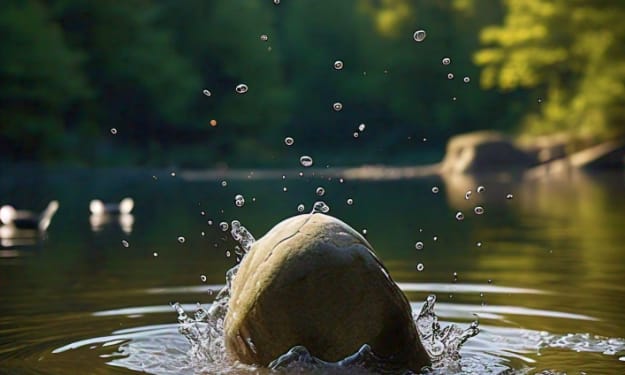Remembering the Forgotten
The Lost Art of Analog Photography

In an era dominated by digital technology and instant gratification, the art of analog photography stands as a testament to a slower, more deliberate approach to capturing images. Before the advent of smartphones and high-resolution digital cameras, photographers relied on film, darkrooms, and a deep understanding of light and composition to create their masterpieces.
Analog photography, often referred to simply as film photography, was once the primary method of capturing moments in time. It required patience, skill, and a certain degree of technical knowledge to operate the cameras and develop the film. Each roll of film contained a finite number of exposures, which meant that every shot had to be carefully composed and executed.
One of the defining characteristics of analog photography is its distinctive aesthetic. Unlike digital images, which can be manipulated and edited with ease using software like Photoshop, analog photographs capture a raw, unfiltered reality. The graininess of the film, the imperfections in exposure and focus, and the unpredictability of the development process all contribute to the unique charm of analog photographs.
For many photographers, working with film was not just a technical process, but a deeply personal and creative endeavor. Each type of film had its own characteristics - from the rich colors of Kodachrome to the moody tones of black-and-white Ilford film. Photographers would often experiment with different films and techniques to achieve the desired look for their images.
The process of developing film was another crucial aspect of analog photography. In a darkroom illuminated only by a dim red light, photographers would carefully handle rolls of exposed film, using chemical baths to reveal the latent images captured on the negatives. The development process required precision and attention to detail, as even minor variations in temperature or timing could affect the final outcome of the photographs.
Beyond the technical aspects, analog photography fostered a sense of connection between the photographer and their subject. Without the instant feedback of a digital display, photographers had to rely on their intuition and experience to capture decisive moments. Each click of the shutter was a commitment to a particular composition or expression, with no opportunity for immediate review or retake.
Analog photography also encouraged a more deliberate approach to composition and framing. Photographers would often spend considerable time setting up their shots, carefully considering factors such as light, shadow, and perspective. The limited number of exposures on a roll of film encouraged photographers to think critically about each image before pressing the shutter button.
In addition to its technical and aesthetic qualities, analog photography played a significant role in shaping the cultural and social landscape of the 20th century. Iconic images captured on film - such as Dorothea Lange's "Migrant Mother" or Robert Capa's "The Falling Soldier" - have become enduring symbols of historical events and human emotion. These photographs not only document the past but also evoke powerful feelings and memories in those who view them.
Despite its enduring appeal, analog photography began to decline in popularity with the advent of digital technology in the late 20th century. Digital cameras offered photographers unprecedented flexibility and convenience, allowing them to capture, view, and edit images instantly. The rise of social media platforms like Instagram further accelerated the shift towards digital photography, as users embraced the ability to share and consume images online.
Today, analog photography occupies a niche within the broader photographic community. While digital cameras dominate the market, there remains a dedicated group of enthusiasts who continue to shoot with film. For these photographers, analog photography represents more than just a technical process - it embodies a philosophy of craftsmanship, patience, and creativity that is increasingly rare in our fast-paced digital world.
In recent years, there has been a resurgence of interest in analog photography among younger generations who are drawn to its tactile nature and distinctive aesthetic. Film manufacturers have responded to this demand by reintroducing classic film stocks and developing new products tailored to the needs of modern photographers.
The revival of analog photography has also been fueled by a growing appreciation for the artistry and craftsmanship involved in film photography. Many photographers value the hands-on experience of shooting with film, from loading the camera with a fresh roll of film to developing and printing their own photographs in a darkroom.
In an age of digital saturation, analog photography offers a counterpoint to the instant gratification of digital images. It encourages photographers to slow down, to think critically about their craft, and to embrace the imperfections that make each photograph unique. For some photographers, shooting with film is not just a creative choice, but a way of preserving a tradition and a connection to the history of photography.
As we look to the future, the future of analog photography remains uncertain. While digital technology continues to advance, there is a growing recognition of the value of analog techniques and the unique qualities they bring to the art of photography. Whether shooting with film or pixels, photographers will continue to explore new ways of capturing and sharing images that resonate with audiences around the world.
In conclusion, analog photography stands as a testament to the enduring power of craftsmanship, creativity, and human connection in the art of image-making. While the methods and technologies may evolve, the fundamental principles of photography - light, composition, and emotion - remain timeless. Whether capturing a decisive moment or documenting a historical event, analog photography continues to inspire and captivate audiences with its timeless beauty and authenticity.
I hope you find this piece on analog photography engaging and informative! Let me know if there's anything else you'd like to explore or discuss.
About the Creator
Ekombe hau
Fictional stories writing and types of good narrative, histories science etc.
content creator in vocal media
lover of music
musical instrument Drummer
Master of psychology and counselling
Enjoyed the story? Support the Creator.
Subscribe for free to receive all their stories in your feed. You could also pledge your support or give them a one-off tip, letting them know you appreciate their work.






Comments
There are no comments for this story
Be the first to respond and start the conversation.